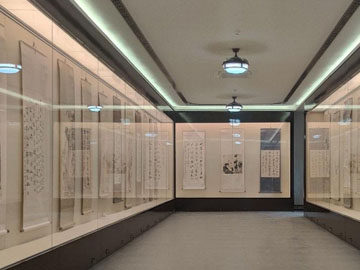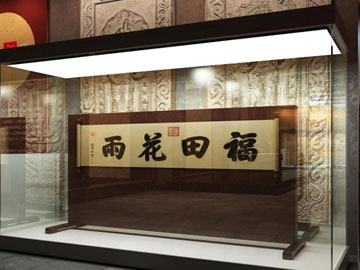Behind the Scenes of Museum Storage
- 17 Mar, 2023
- 2300 views
In some museums, this problem has led to the creation of a different kind of viewing experience. Some spaces have been rearranged to fulfil the dual purpose of storage and display, and to retain both display objects and storage objects on the display floor. These spaces are often referred to as study galleries or visible storage centres and are crammed with an overload of items that would otherwise be invisible. Some objects are kept in large cabinets or boxes, leaving a sense of mystery to museum visitors. The Metropolitan Museum of Art, the Brooklyn Museum and the New York Historical Society have all adopted this less direct form of viewing experience and have decided to allow museum visitors to see for themselves the scale of their lifelong collections.
The Brooklyn Museum's Visible Storage Centre
In 2005, the Brooklyn Museum opened a visible storage research centre, which was created as a behind-the-scenes location for the main museum. The centre does not, of course, address the overall storage issues of the main museum, but rather welcomes visitors in to see the objects on display in a way that has never been done before. Some rooms are filled from floor to ceiling with objects from the Spanish colonial period as well as items from Peru, Mexico and North America. The structure of the centre is designed to encourage learning and exploration among museum visitors, who can navigate the museum at their own pace while browsing the collection and flicking through the catalogue. The dismantling of this centre has opened up some new experiences for the public.

Low-oxygen(Constant Humidity) And Clean Showcase
A solution to a problem
While some museums are willing to use their stored objects for display, others are addressing their small space dilemma with a variety of storage solutions. As museum collections continue to grow, it is important to have adaptable, customisable storage options. Curators need to be able to access the hundreds of millions to millions of objects in storage so that they can change what is on display. In addition, researchers and educators may request objects for research and teaching purposes. Above all, restorers need continuous access to objects in storage to check their conservation status. Museums use a variety of storage solutions to ensure that their collections are secure and readily available.
Storage options
Museums strive to ensure the security of their collections, which means planning ahead for all potential problems. Proper museum storage must be able to withstand natural disasters such as earthquakes, and must also protect objects from pests and rodents. Ignoring the incorrect temperature can also ruin an entire collection. High-density storage units are ideally suited to alleviating all these problems because they are adaptable and can be renewed at any time. Anti-shock strips can be used in conjunction with high-density storage, which will prevent cans and items from falling and spilling from the shelves. Anti-tilt rail systems are also great as they provide stability and reliability for compact shelving in active areas. By using both methods, collections will remain as intact as possible in the event of an earthquake.

Constant Humidity Showcase
Museum Display Case
Display cabinets are designed to display valuable items in collectors' display cases. This type of display case is ideal for museums, exhibitions and other venues where security is required.
Museum display cabinets can be square, hexagonal or high or low. Use these display cabinets to protect valuable artwork in galleries or to display expensive items in jewellery shops. Many museum display cases include side rail lighting to further focus attention on the items on display. The lighting can be adjusted so that the spotlight can be pointed in almost any direction. There are also museum display cases with mirrored decks that further highlight the exhibits.
All museum display cases should be equipped with some type of locking device. Locks are an important feature of these display cases as they are often used to display valuable merchandise. Even budget museum display cabinets have an alternative method of locking the lid to the base.
A similarity between all these museum display cases is the full view design of the units. After placing the object in the case; the viewer can see the entire object from all angles. This adds to the versatility of these museum display cases; allowing them to be placed anywhere in the room without having to worry about viewing angles.
- Category:
- Arts & Culture
- No comments



